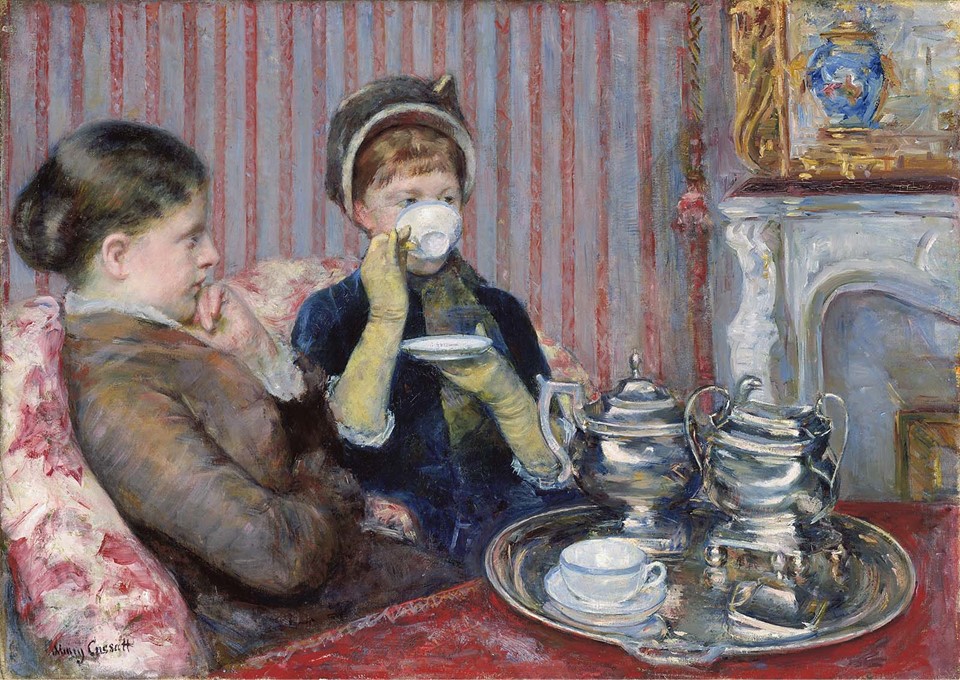
Five O’Clock Tea, 1880, Oil on Canvas, 64.7×92 cm, Museum of Fine Arts, Boston, USA https://commons.wikimedia.org/wiki/File:Mary_Cassatt_-_The_Tea_-_MFA_Boston_42.178.jpg
I believe it is customary in good society to take some slight refreshment at five o’clock… Oscar Wilde humorously wrote in Act 1 of his famous play The Importance of Being Earnest… Five O’Clock Tea with Mary Stevenson Cassatt is how an American painter portrayed, in all seriousness, the same customary ritual with paints. https://www.shmoop.com/importance-of-being-earnest/act-i-full-text-2.html
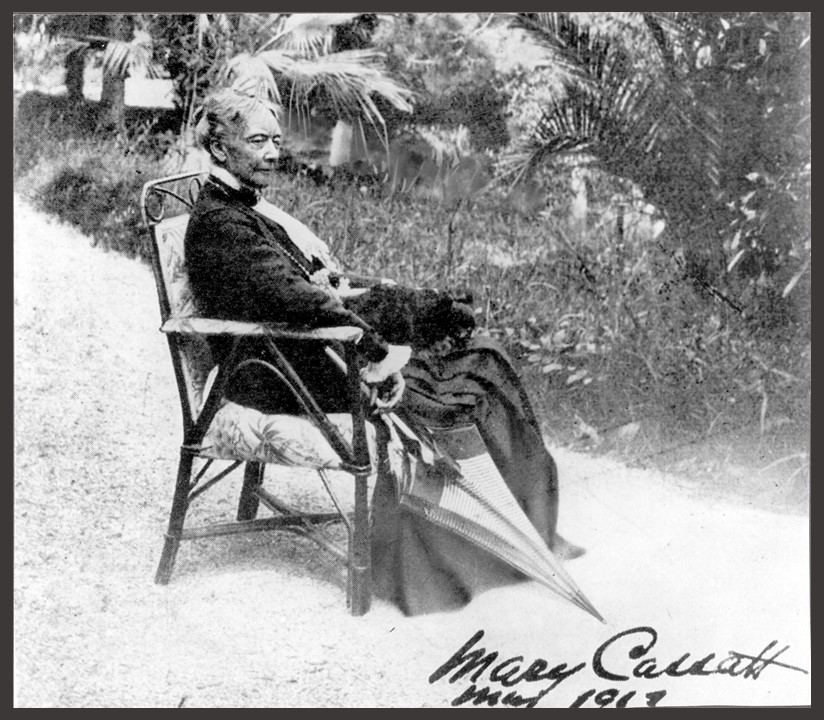
Source: http://digitalcollections.frick.org/digico/#/archive/Archives/Images%20of%20Artists%20
Images of Artists Collection. The Frick Collection/Frick Art Reference Library Archives.
https://commons.wikimedia.org/wiki/File:Mary_Cassatt_photograph_1913.jpg
Mary Stevenson Cassatt (1844 – 1926) was a fortunate lady! Born into a prosperous family in Pennsylvania who believed it was important for women to receive an education, she grew up attending school in Philadelphia and traveling to Europe where …Art kept changing. Reaching adulthood, she persuaded her parents that her life’s destination was to be in Europe, and painting professionally was to become her life’s pursuit! It was not easy for her father to accept Mary’s artistic ambition, but after serious deliberation, he came around and… in 1866, with her mother and family friends acting as chaperones, she settled in Paris and was accepted to study Art in the private studios of Jean-Léon Gérôme, Charles Joshua Chaplin and Thomas Couture. She expanded her training with daily copying in the Louvre and trips to the French countryside where she drew from life. Two years later, in 1868, her painting A Mandoline Player, was accepted for exhibition in the Paris Salon. She was noticed as a professional painter, but she was not fully content!
Everything changed in 1877 when she submitted paintings to enter the year’s Salon and was rejected by the committee. When she met Edgar Degas, an artist she greatly admired, Cassatt was disillusioned with academic painting and eager to experiment. The French artist invited her to collaborate with the Impressionists and exhibit with them in 1879, during the 4th Impressionist Exhibition… I accepted with joy, she later recalled as I hated conventional art. She was one of just a few women, and the only American, to exhibit with the group. She was finally happy in an artistic environment that suited her needs… Plein Air painting, vibrant, metallic in some cases, color, in short, dancing brushstrokes, flat space, the discovery of Japanism… and scenes of everyday modern life in Paris – her family, friends, and their children. https://www.nga.gov/content/dam/ngaweb/Education/learning-resources/an-eye-for-art/AnEyeforArt-MaryCassatt.pdf and https://collections.mfa.org/objects/32829/the-tea;jsessionid=20E4DE2A8A06D4816FA7D20AFF171D7C?ctx=884b7166-374f-468a-8909-136f2658e914&idx=7
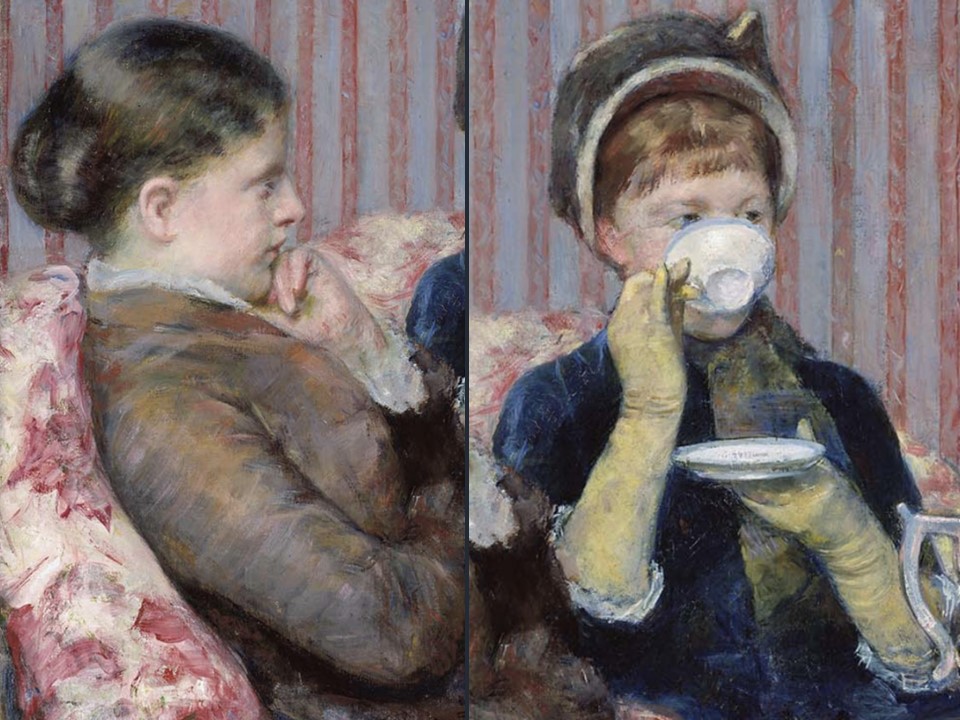
Five O’Clock Tea (Details – 2 women), 1880, Oil on Canvas, 64.7×92 cm, Museum of Fine Arts, Boston, USA
https://atsunnyside.blog/2018/08/31/tea-by-mary-cassatt-1880/
In 1880 Mary Cassatt painted Five O’Clock Tea documenting the trendy social ritual of well-to-do women like herself. Paintings of women taking afternoon tea became a popular theme for Cassatt in the late 1870s and early 1880s, and in the collection of the Metropolitan Museum of Art in New York, Mary Cassatt aficionados can admire three fine examples of this trend, two paintings in oil and a print. https://www.metmuseum.org/toah/hd/cast/hd_cast.htm
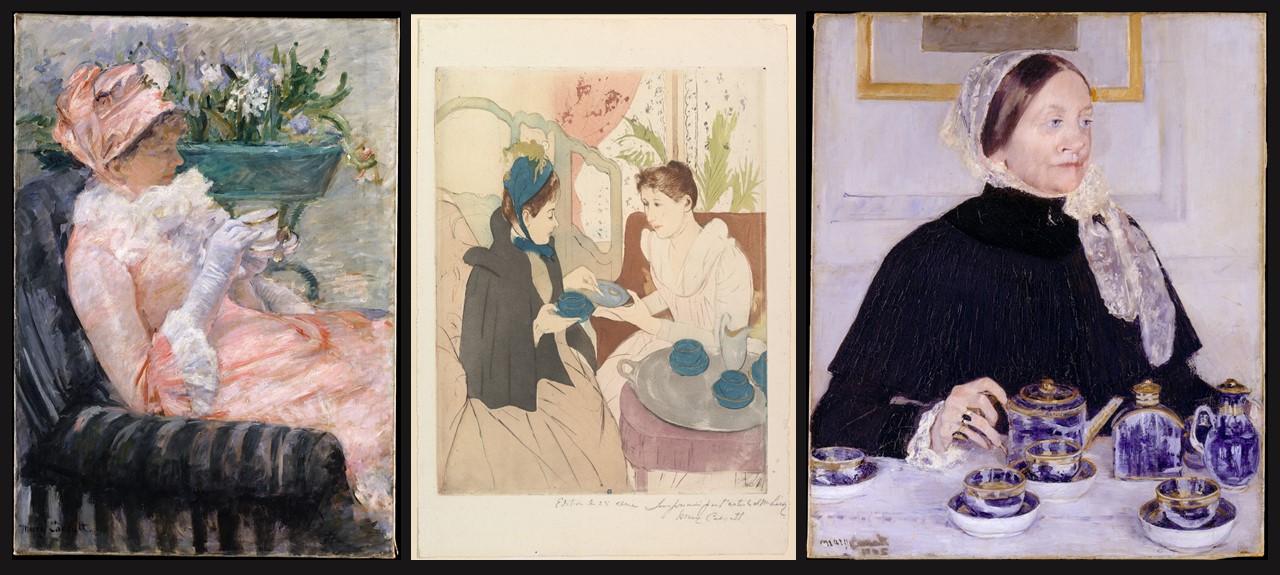
The Cup of Tea, ca. 1880–81, Oil on Canvas, 92.4 x 65.4 cm, the MET, NY, USA
Afternoon Tea Party, 1890–91, Drypoint and aquatint, printed in color from three plates, Plate: 34.6 x 26.7 cm, the MET, NY, USA
Lady at the Tea Table, 1883–85, Oil on Canvas, 73.7 x 61 cm, the MET, NY, USA
https://upload.wikimedia.org/wikipedia/commons/8/82/The_Cup_of_Tea_MET_DT88.jpg
https://commons.wikimedia.org/wiki/File:Afternoon_Tea_Party_MET_DP819587.jpg
https://upload.wikimedia.org/wikipedia/commons/b/b5/Lady_at_the_Tea_Table_MET_DT516.jpg
The MFA Five O’Clock Tea, modern, intimate, and informal, is my favourite. It displays a contemporary drawing room, sometimes described as Cassatt’s own. The fine striped wallpaper and carved marble fireplace, ornamented with an elaborately framed painting and a porcelain jar, are typical of an upper-middle class Parisian interior, and the antique Silver Tea Service on the foreground table implies a distinguished family history. The truth is that the depicted Tea Service was part of a family Tea Set made in Philadelphia about 1813, of which six pieces (but not the tray) are now in the MFA’s collection. https://collections.mfa.org/objects/32829/the-tea;jsessionid=20E4DE2A8A06D4816FA7D20AFF171D7C?ctx=884b7166-374f-468a-8909-136f2658e914&idx=7 and https://i.pinimg.com/originals/7f/ef/3d/7fef3d6daead8cc0cbed4636a232971f.jpg
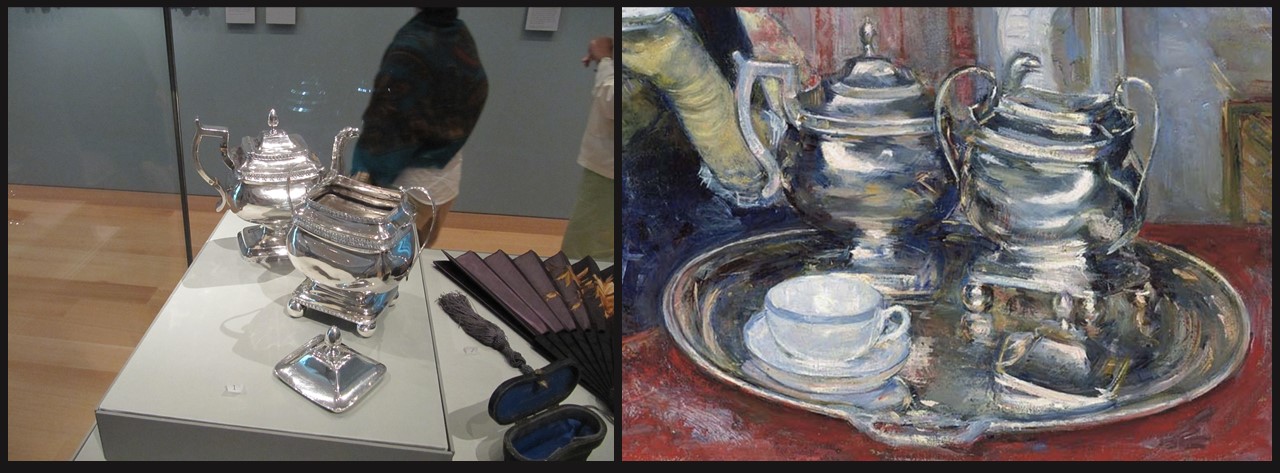
Five O’Clock Tea (Detail Tea Set), 1880, Oil on Canvas, 64.7×92 cm, Museum of Fine Arts, Boston, USA
https://atsunnyside.blog/2018/08/31/tea-by-mary-cassatt-1880/
Mary Cassatt’s Five O’Clock Tea is a testimony to modernity by rejecting several traditional artistic conventions. For example, the artist denies the human form its usual compositional primacy as the tea service seems larger in scale than the women themselves. Taking further steps towards novelty in art, Mary Cassattt renders the depicted guest in the transitory act of drinking. By selecting the only point in the action when her subject’s face is almost completely hidden by the teacup, Cassatt reiterates her modernist creed that her painting is not only about representing likeness, but also about design and color. Furthermore, she uses the oval shapes of cups and saucers, trays, hats, and faces as repetitive patterns, offsetting the strict graphic geometry of the gray and rose striped wallpaper. I am not surprised that J.-K. Huysmans wrote that the Five O’Clock Tea was an excellent canvas. https://collections.mfa.org/objects/32829/the-tea;jsessionid=20E4DE2A8A06D4816FA7D20AFF171D7C?ctx=884b7166-374f-468a-8909-136f2658e914&idx=7
For a Student Activity, please… Check HERE!